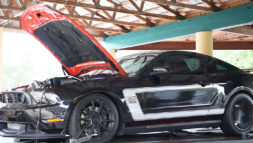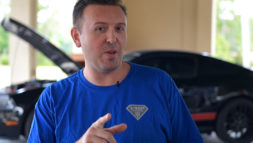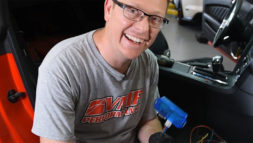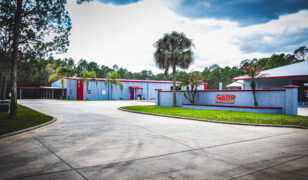VMP Gen3 Takes Our Stock Shelby GT500 into the 800-HP Range
Estimated reading time: 2 minutes
…
The 2012 Shelby GT500 packs a punch with its supercharged 5.4-liter engine putting out 550 crank horsepower from the factory. Despite its factory prowess, the GT500 lends itself readily to modification. Ours was the perfect testbed to demonstrate the new Gen3 blower’s capabilities on a mild car. Our 2.65 liter VMP Gen3 uses Eaton’s new 2650 rotor pack . It is designed to move even more air at a lower RPM than our Gen2R blower model. “We wanted to show the power with the stock supercharger, the VMP Gen2R, and the VMP Gen3,” Justin Starkey explains.
To begin our comparison, we established a baseline with the Shelby GT500 in its stock form. With zero modifications, our Shelby GT500 generated 487 rear wheel horsepower and 440 rear wheel torque on 93 octane.
Now that we had a baseline, it was time to swap on the Gen2R. VMP installed the supporting modifications that come with the kit, including a VMP Twinjet 67 mm throttle body, JLT 123mm cold air, Ford 56 lb/hr fuel injectors, Brisk spark plugs, and a VMP custom calibration. Justin installed a 2.4 inch pulley. The car made 658 rear wheel horsepower.
Next, we swapped on the VMP Gen3 blower. Retaining the 67 mm throttle body, cold air, injectors, plugs, and 93 octane, Justin tested with the bigger 3.0 inch pulley. With this combo, the car made 661 rear wheel horsepower. Impressive results, considering the Gen3 made more horsepower than the Gen2R despite running six pulley sizes larger, and two fewer pounds of boost.
Further testing, the 2.8 inch pulley, the Shelby made 684 horsepower to the tire and 634 rear wheel torque. Pulleying down to a 2.6 inch unit, the GT500 hit 695 rear wheel horsepower pull and 640 rear wheel torque. Gains were still happening; the air hungry Gen3 demanded a swap to the 160 mm throttle body designed for the beastly blower.
With the 160 mm throttle body installed, and still running 93 octane fuel, Justin returned to the 3.0 inch pulley to determine if there were any improvements in power. With the big pulley in place, the car made 689 horses and 620 lb. ft. of torque.
Continuing with a 2.8 inch pulley and larger throttle body, the Shelby hit 712 rear wheel horsepower and 657 lb∙ft of torque. The car made 721 rear wheel horse power and 659 rear wheel torque after pulleying down to the 2.6 inch unit.
Finally pushing the limits of pump gas, it was time to switch to C16 race gas and further tuning. With the Gen3, a 2.6 inch pulley, the 160 mm throttle body, and C16, the Shelby broke into the 800s with 802 rear wheel horsepower and 758 rear wheel torque.

Tags:
2.65 L TVSBoostBoost a pumpCAICold Air IntakeDeatschwerksEatonEaton Rotor PackEaton Rotor PakfordFord Mustang GTFord Mustang GT500Ford ShelbyFuel injectorsFuel Pump BoosterGen 3Gen3GT500Heat ExchangerJLTJLT Big AirmustangPMASRoush PerformanceShelbyShelby GT500SuperchargedSuperchargerSuperchargersThrottle BodyTVSvmpVMP Custom CalibrationVMP Dual Fan Triple Pass Heat ExchangerVMP Fuel Pump BoosterVMP Gen 3VMP Gen3VMP Gen3 TVSVMP Heat Exchangervmp performanceVMP Superchargersvmp tuning













